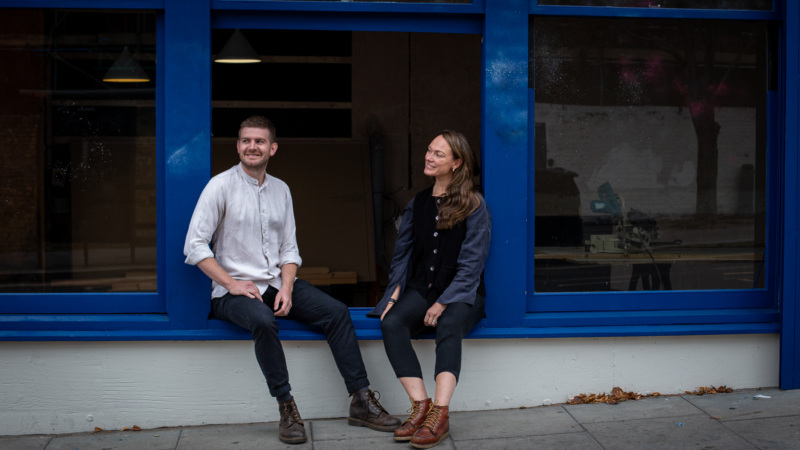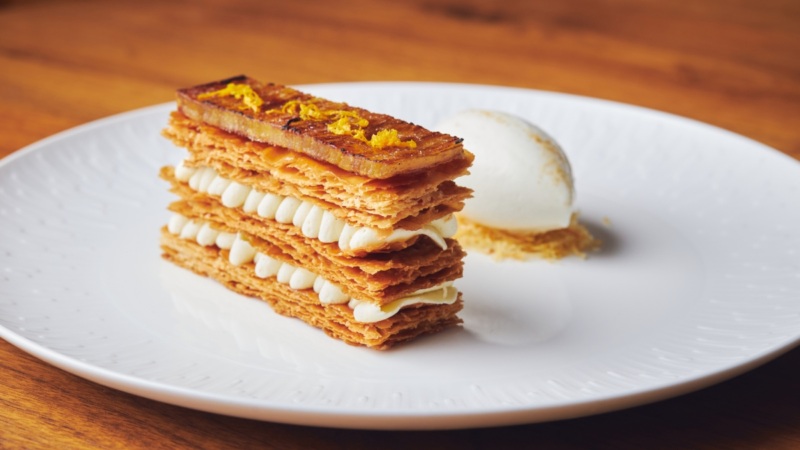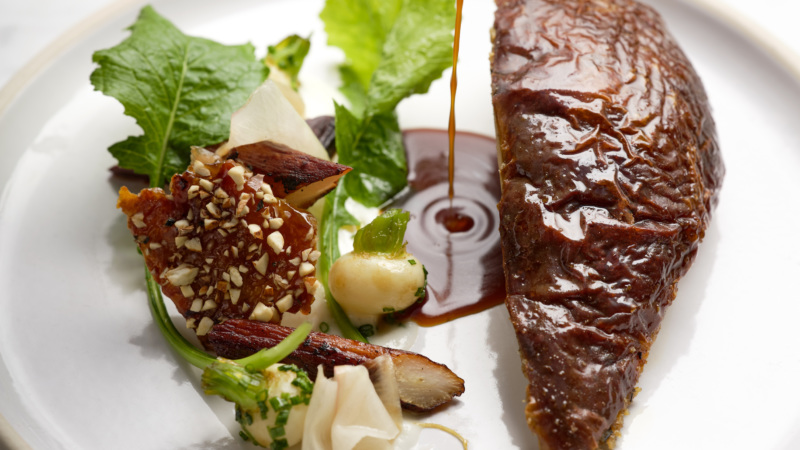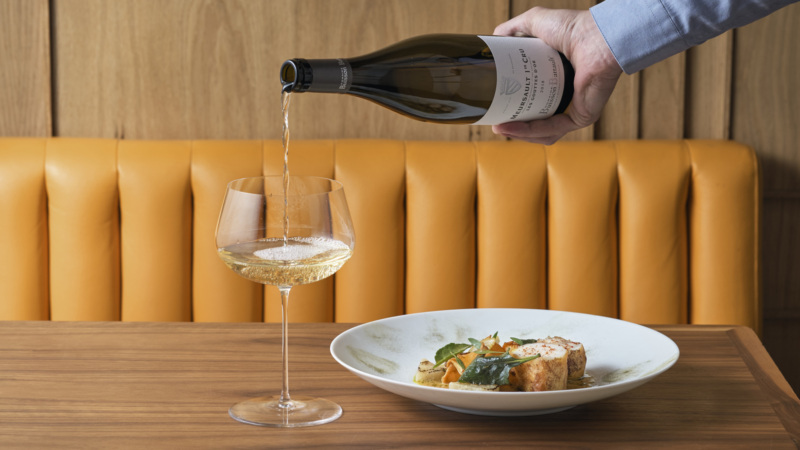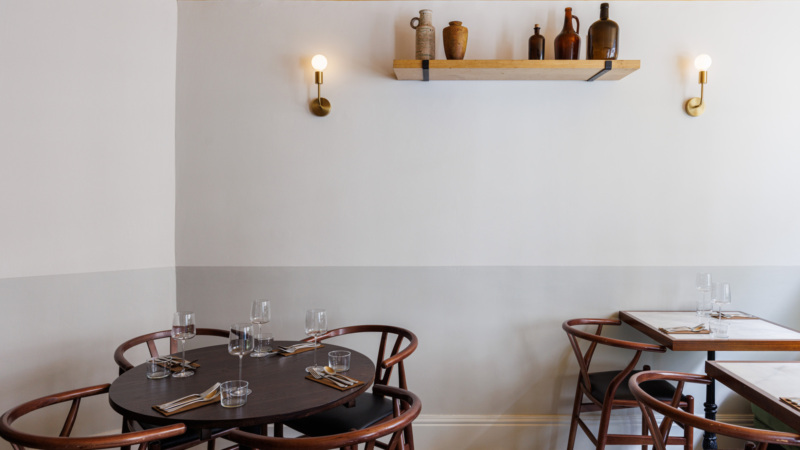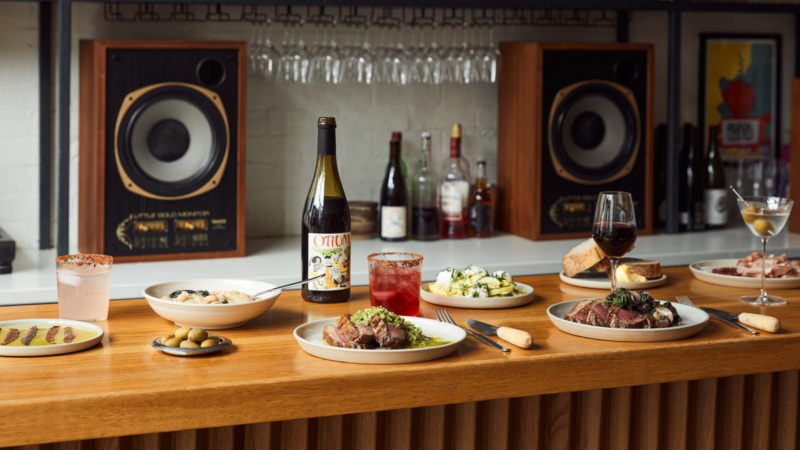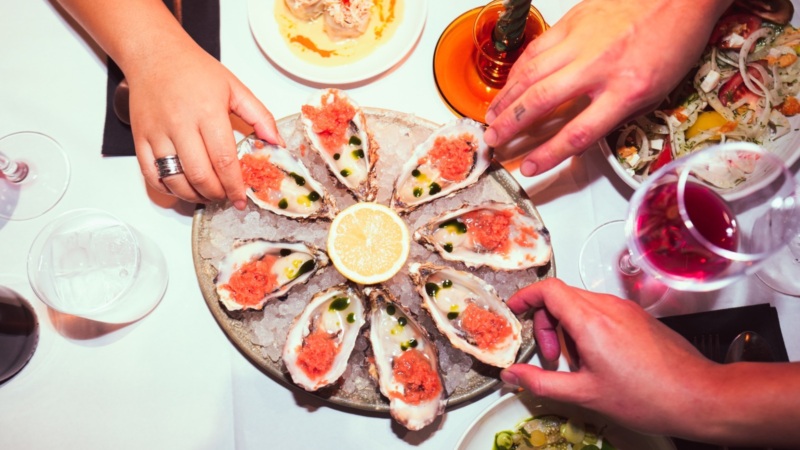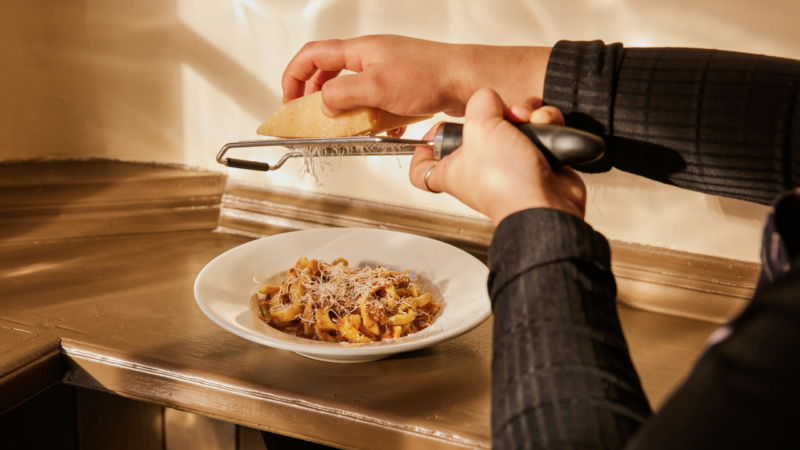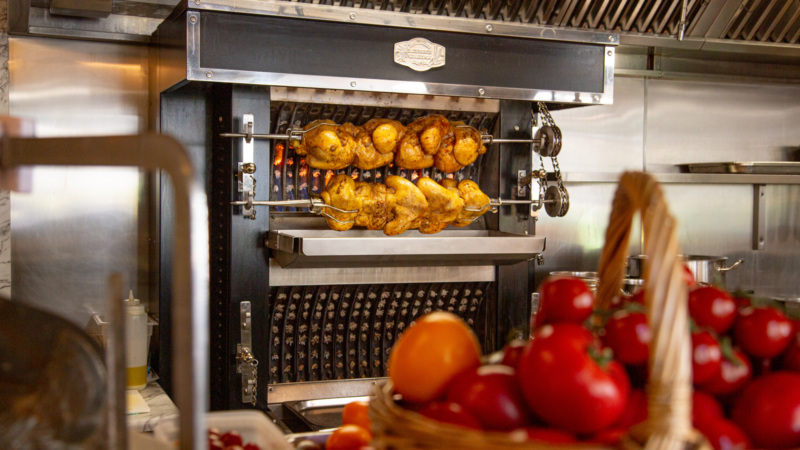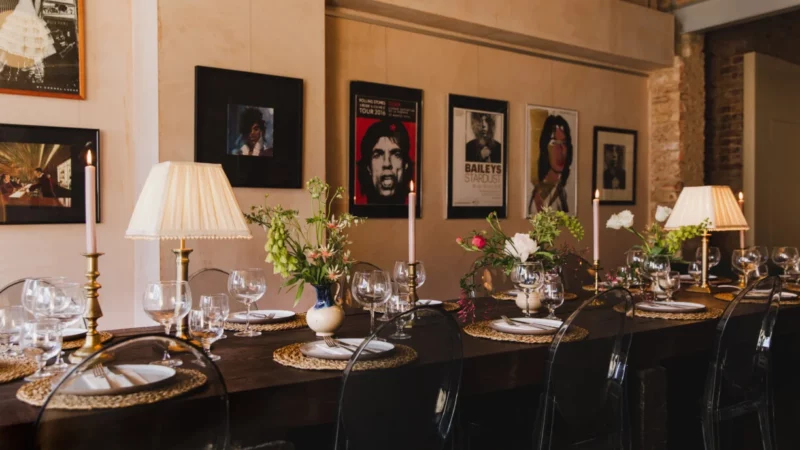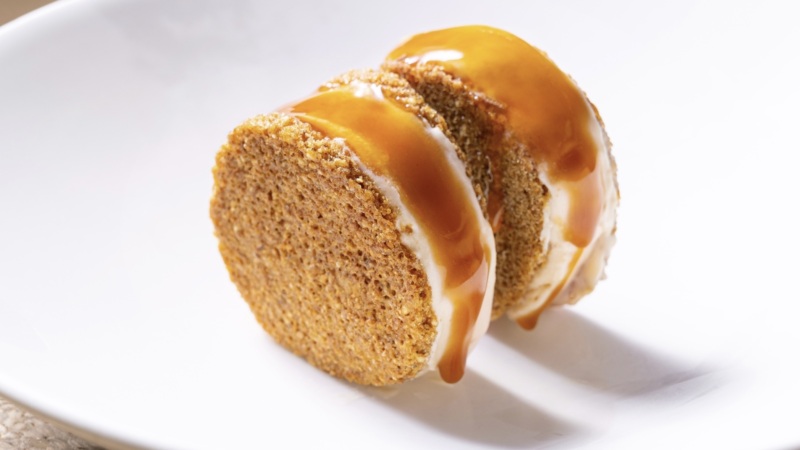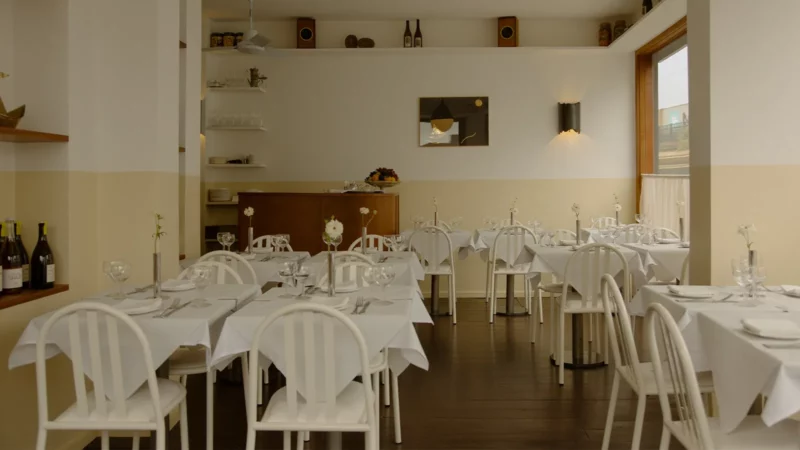
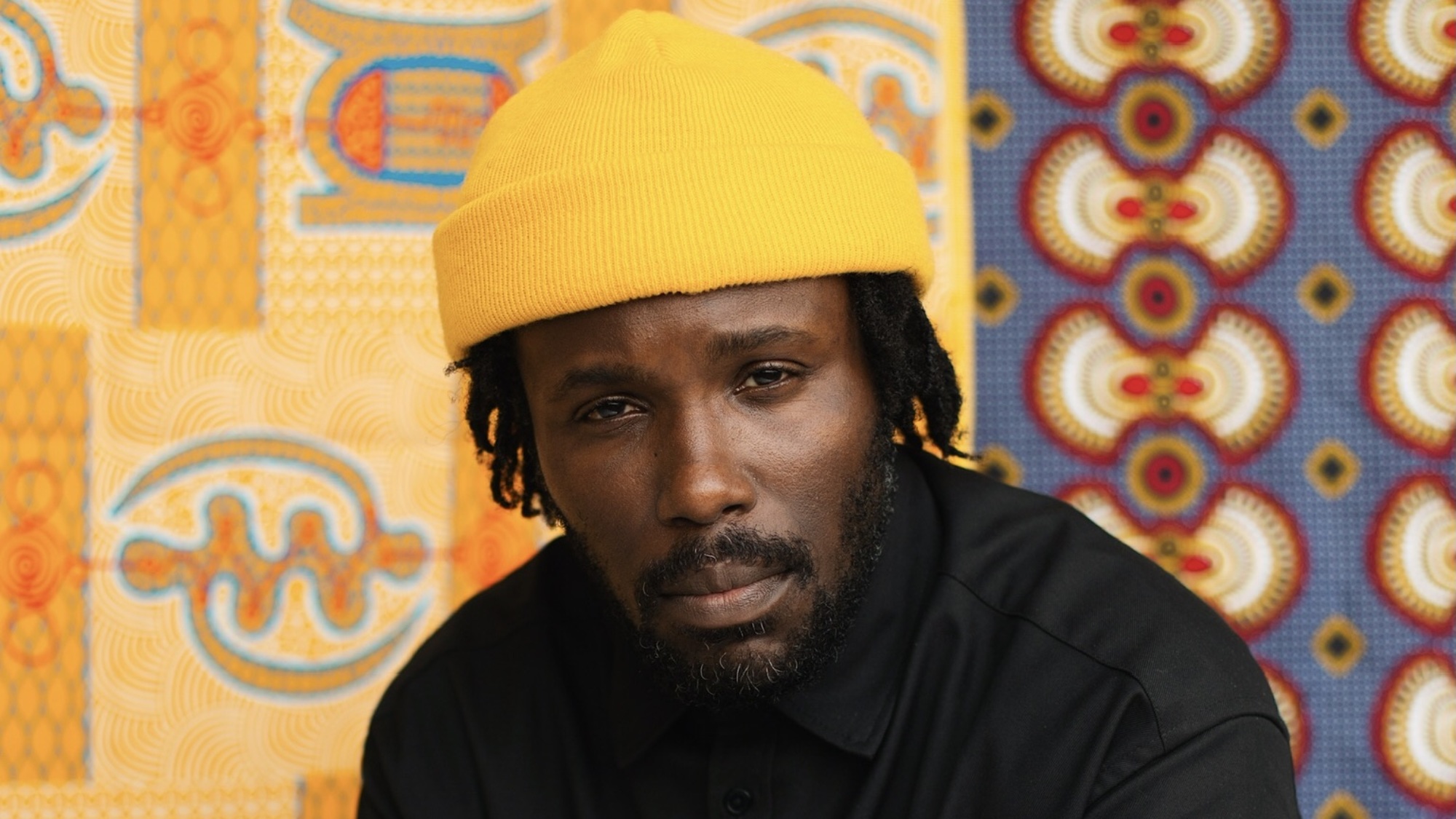
Akwasi Brenya-Mensa on Reflecting Blackness on Tatale’s Menu
Akwasi Brenya-Mensa is a Ghanaian-British chef, restaurateur, curator, DJ, and broadcaster – and you might accurately add storyteller to that list. At Tatale, Brenya-Mensa’s new pan-African restaurant at The Africa Centre in Southwark, he demonstrates a penchant for storytelling – through food, music, art.
The stories he shares, celebrates, and amplifies, tell of Blackness and the Black experience in Africa and the diaspora. If there’s a single ingredient that represents that for him, then it’s the plantain, the key ingredient in tatale, the Ghanaian pancakes after which the restaurant is named.
His own story is that of the eldest of three boys, raised in Mitcham by parents who came to the UK from Ghana in the 1970s. Brenya-Mensa started his first food concept young, a burger brand straight out of university in Sheffield, before travelling the world as a music producer and artist manager. A trip to Ghana in 2019 gave rise to his supper club Mensa, Plates & Friends. Already, Brenya-Mensa’s taken Tatale on the road; earlier this year, the “Tatale International Spring Tour” reached Accra, Amsterdam, Puerto Rico, Berlin and beyond. He has no shortage of source material.
Brenya-Mensa literally writes himself into the menu. With every dish comes an explainer, educational or anecdotal in nature (“Working with Rambert Dance School in Tel Aviv, I sampled many variations of hummus and met their makers. In Morocco, I nearly got bitten by a snake”). But there’s no egotism in the first-person – quite the opposite. For inherent in the telling of his story is the possibility of all the other stories, the Black voices and Black creativity yet to be told, whether in this space or elsewhere. As he says, “I’m telling my story, I’m not telling anybody else’s.”
Tatale will be a space for others’ stories. He hopes it will seed Black talent, whether through education, events, kitchen takeovers, supper clubs or pop-ups. “My hope is that this concept will both inspire the next generation of Black restaurateurs and also provide a base for them. Towards the end of the year, my hope is we can host events with people who are in the position I was in a year ago.” His wider interest, as a self-described African Futurist, is in what’s next: how will African food look in a generation? Two generations?
For now, his menu numbers just half a dozen dishes, all but one of which are vegetarian or vegan. “I don’t think the menu needs to be any bigger. There are a lot of dishes that people haven’t had before. My preference would be is for people to try as much of it as possible. A group of two to four people can order the whole menu.” Here are five key dishes from his opening menu, in Brenya-Mensa’s own words.

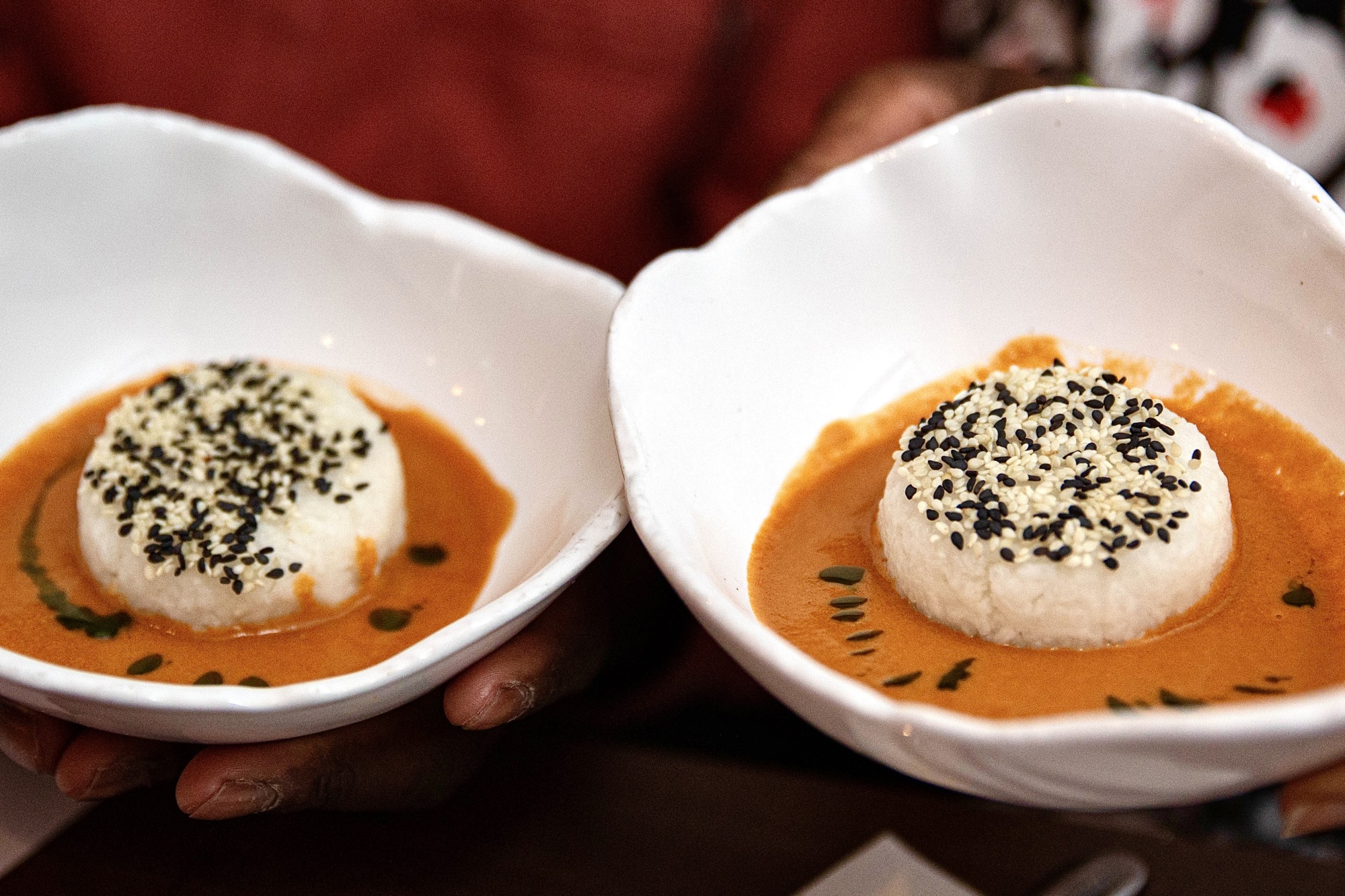
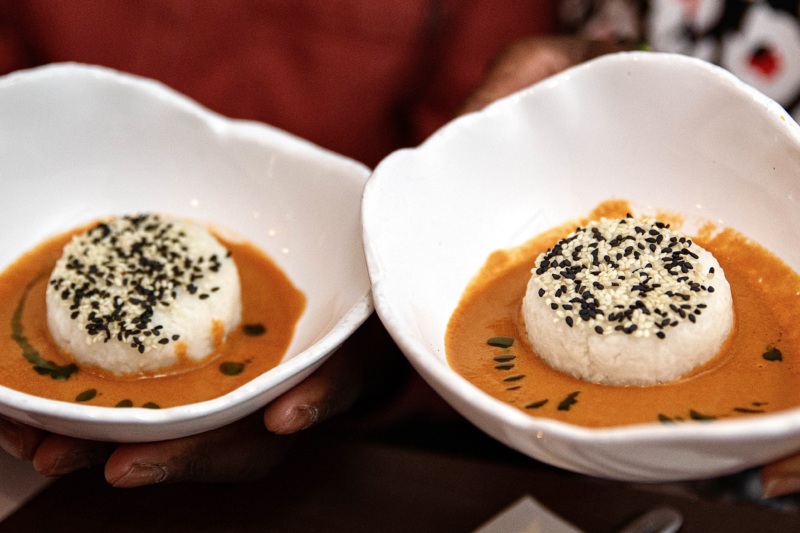
Omo Tuo Nkatekwan
“It’s a very traditional, authentic Ghanaian dish that’s eaten on a Sunday in Ghana when everyone makes it at home or goes out to eat it. It’s like our version of a Sunday roast, if you will. My mum and aunties prepared it when we were younger. I never chose it as a signature dish; it was chosen for me, which I like. When I took it off the menu, everyone complained so it’s not been off the menu since. It’s probably the dish that has the least amount of tampering from a traditional perspective. I have made it plant-based but other than that, I haven’t changed it too much.
“You cook rice with plenty of water so you get a soft mushy rice then traditionally, you’d mould it into a ball with your hands. I do it with a mould because I like the idea of uniformity. The soup is a groundnut soup made using a combination of ginger, garlic, onions, tomatoes, groundnut, and scotch bonnet. It’s a relatively simple dish but cooked over several hours, the flavours meld together to create this depth.”
I am a Ghanaian raised outside of Ghana, so I can’t make it how it would be back there. I can only tell my story.
Black-eyed Bean Hummus, Red Palm Oil, Dukkah
“In 2018, I went out to Tel Aviv for a couple of weeks to work with the Rambert Dance Company and the artist Gaika. In between rehearsals, we had time to explore the city. Hummus is something we ate a lot of on that trip as well as more cauliflower than I’ve ever eaten in my life!
When I was putting this menu together and thinking of a dish that could come from the kitchen relatively quickly but was also a good fit, I thought of hummus. The menu at Tatale is my lived experience. I’m someone that considers themselves a Ghanaian; I’ve been raised in the UK and I’ve also spent some weeks in Tel Aviv, and this dish is a result of that. I thought about how if I’m making this dish in that mould, what does it look like? To me, the obvious thing was, instead of a chickpea, to use an ingredient used heavily in West Africa. Black-eyed beans are used in red red; they’re used in waakye, a Ghanaian sticky rice.
Most hummus I saw in Tel Aviv used extra virgin olive oil. Again, for me, it was what does this look like on the continent? Red palm oil doesn’t actually get used in this way but that’s part of my mandate or my manifesto, to look at the things you know and think about how else you can use them. Why shouldn’t there be a red puddle instead of a golden puddle in the middle of the hummus? I’m not claiming this is the best hummus there is – hummus is not indigenous to where I’m from – but it’s probably one of the most unique hummuses people will ever try.
Obviously, I put in on the menu because I like it, but I was shocked by the reaction that dish has had: people have literally asked us if they can buy it to take home. It was one of the standout dishes in our Guardian review. I’m super stoked that everybody likes it.”
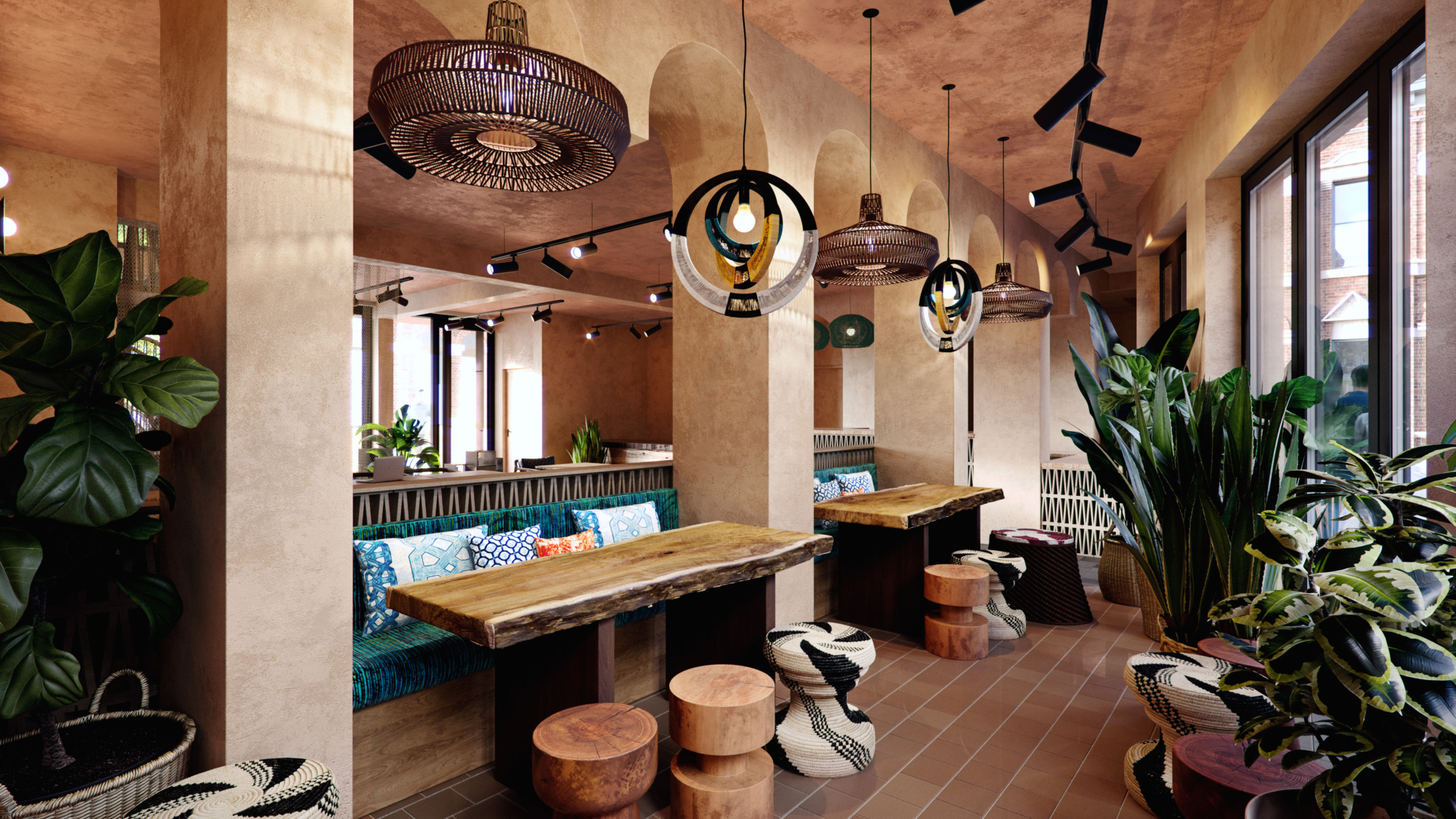
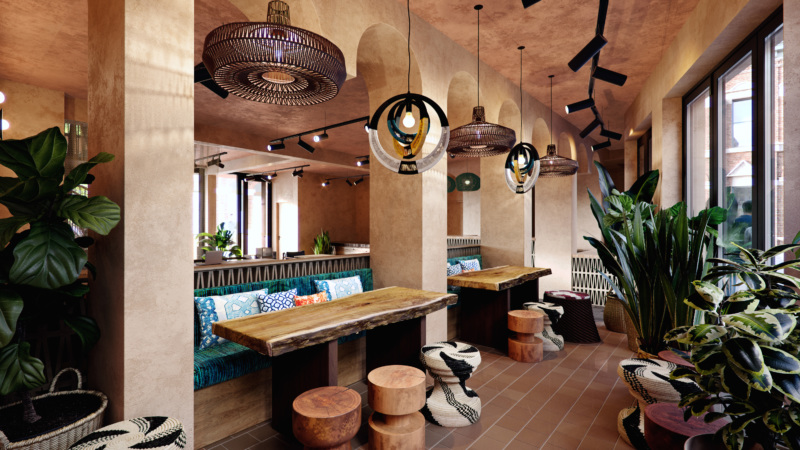
Ackee Croquettes
“I want Tatale’s menu to reflect Blackness. I describe this concept as a pan-African concept and to me, the term ‘pan-African’ equates to Blackness. Ackee and Saltfish is the national dish of Jamaica. Many of the Caribbean people came from Africa – they were removed forcibly but ultimately that’s their home, so that’s one of the reasons I wanted to play with the ingredient ackee. Also, something a lot of people are not aware of, is that ackee is indigenous to Ghana. We are seeing and have seen over the last few years a lot of great work by people such as Dr Jessica B.Harris, author of High on the Hog, into food pathways and the links between dishes and ingredients on the continent and where they have popped up in other parts of the world. So, for me, that dish is a way to tell a story and educate people. I think they all do, but that one in particular is a love letter between West Africa and the West Indies.”
Chichinga Buttermilk Fried Chicken Wings
“Chichinga is a peanut-based spice mix that is used across Africa. It’s called many different names – suya, yaji, dibi. There are lots of different versions of this dish that are all very closely related. The format is like a kebab with really thinly sliced pieces of meat cooked over fire, then dabbed in this oil and sprinkled with this spice mix, and they’re delicious. My previous foray into food was burgers and brunch restaurants where we’d always have chicken wings on the menu so I thought it would be really cool to have a chicken wing version of this roadside snack.
“I went to Ghana for a month in January and went to a roadside chicken kebab stand owned by a friend of my aunt’s and I just spent an afternoon with them. I hung out with them, learned how to make kebabs, learned a bit about how to make the spices. I always like to go and learn, then come back and that’s my starting point from where I’ll do my development and come to a final product that is mine.”
Red Red Black-eyed Bean Stew, Plantain, Avocado
“On the one hand, there’s a pressure to make it authentic or authentically; on the other hand, I am a Ghanaian raised outside of Ghana, so I can’t make it how it would be back there, so I tend not to put too much pressure on myself. I can only tell my story. I probably make things a bit more difficult for myself because I like to create dishes without meat so that presents other challenges that I have to overcome. Red red would normally be made with fish. I’ve taken that out. I can’t just take it out, so how am I making sure that you’re getting a complete dish? I guess the secret weapon there is dawa dawa, a fermented locust bean available across a lot of West Africa. It’s very pungent and has an almost – this is going to sound weird – fishy and chocolatey aroma. We’ve had our fair share of uncles and aunties come and most of them have enjoyed it. Some of them have had some feedback, some of them would prefer to have some meat in it, but I’m OK with that because, you know, I’m telling my story, I’m not telling anybody else’s.”
Hilary Armstrong is a London-based journalist and editor. Follow her on Instagram and Twitter. Follow Resy, too.

